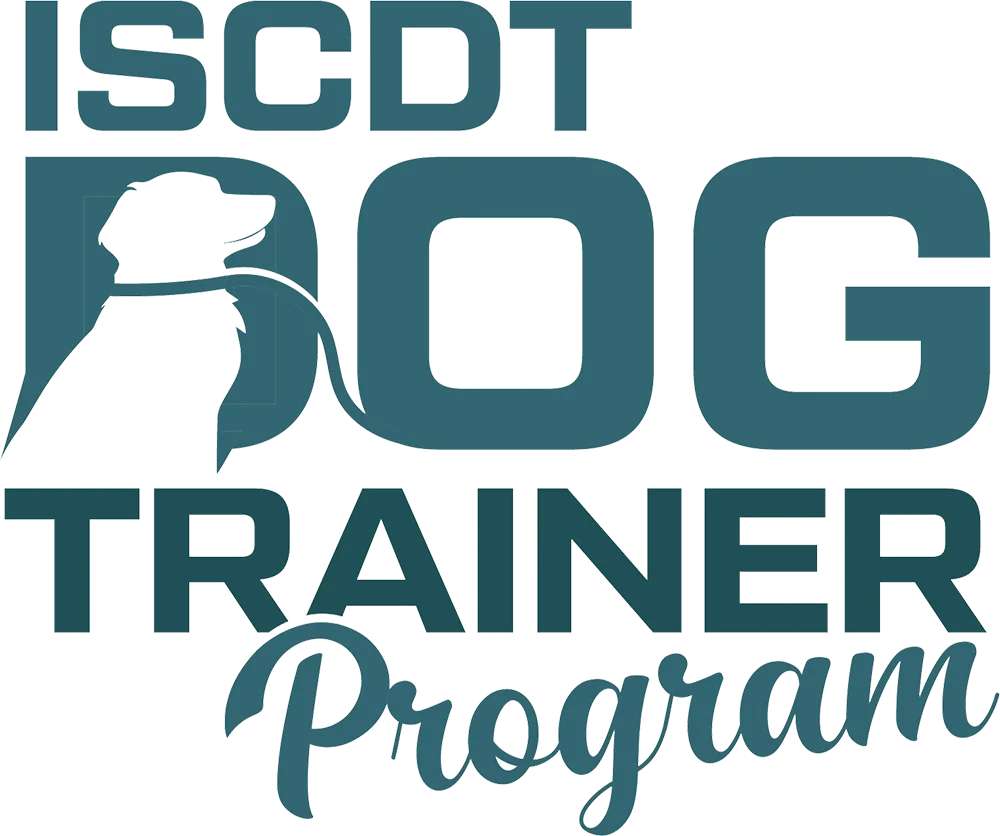Effective dog training extends beyond command instruction. It involves instilling behaviors that dogs reliably respond to, regardless of distractions or different environments. To provide new dog trainers with essential tools for success, we have selected 10 tips to share in this blog. Next week we will provide another 10 tips for effective dog training.
A phrase that ISCDT – Dog Trainer Program students often hear is that dog training should never be cookie cutter. Keeping that in mind, please remember that every dog is unique and what works for one might not work for another. It’s all about finding what works best for your client dogs.
Implement Leash Training

A leash is an essential tool for more than just walking a dog. When training dogs, the leash becomes a bridge between safety, effective communication and behavioral reinforcement. It serves as a silent, yet, effective dog training companion.
In between training sessions, have your client dogs wear a short leash to curb undesirable behavior and to enhance their focus, even outside of training sessions. A short leash should only be worn when the dog is being supervised. The leash should not touch the floor. It is just long enough for you to hold when the dog ignores your cues.
Set Realistic Expectations
Avoid giving commands unless you’re certain your dog comprehends them. A command understood in a quiet environment like your home may not be recognized around distractions or in unfamiliar surroundings. Gradually increase the level of distractions and change the settings to ensure successful training.
Should your client dog struggle at any point during the generalization stage, take a step back and work in the last location the dog was successful in. Practice some more before moving to a new location or higher-distraction environment.
Keep it Short and Sweet
Issue your command only once. For instance, say “Sit” instead of repeating “sit…sit…sit”. It’s crucial that dogs obey commands the first time they are given. Imagine how safe your client dog is when that dog comes back to their owner the moment they say “come”, without the need for repetition. While this is a well-known rule for dog trainers, we find that when trainers are in the middle of lessons, they tend to repeat commands.
Reward Generously

Acknowledge your client dogs each time they obey commands or behave appropriately. Rewards can range from food and toys to affection and verbal praise. Rewards can also be something the dog truly wants, such as going for a walk, a meal, a treat or playtime.
Maintain Consistency
Teach your client to use the training words you taught the dog. Changing commands can confuse dogs. For instance, if their dog picks something up, remind your clients to cue the dog to “drop it” instead of using phrases like “knock it off, don’t touch my shoe, stop that, give it to me.”
Practice Kindness
Dog training is a learning journey for both your canine and human clients. Remind your clients that yelling or showing frustration when a dog finds the lesson challenging, will work against their efforts.
When training dogs, dog trainers and owners must maintain a cool, calm, and confident demeanor during training. Reinforce the importance of your client celebrating their dog’s successes. No one wants to only have their shortcomings pointed out.
Understand the Difference Between Praise and Marker Words
It’s crucial to differentiate between a praise word like “good” and a marker word such as “yes” or a clicker sound.
When teaching a dog a new behavior, a marker word or sound is used to mark the exact moment the dog performed the desired behavior, signaling that a reward is coming. A praise word is used to communicate to a dog that knows a command, that they are doing well and should continue the behavior.
Patience is Key
Training takes time and each dog learns at their own pace. One dog may pick up on cues quickly, which the next may require that you break the lesson down into smaller pieces. Be patient and give your client dogs the time they need to understand and respond to commands.
Understand Dog Body Language
Dogs communicate largely through body language. Understanding these signals can help you respond better to your client dogs’ needs and improve your training sessions. ISCDT’s online dog training course covers canine communication skills in depth.
Socialization is Important
Teach clients the importance of introducing their dogs to different environments, people and other animals. This helps them become more adaptable and reduces the likelihood of becoming fearful or aggressive. Remember to advise your client that forcing dogs into scary situations will hurt their efforts.
In conclusion, effective dog training is a multifaceted journey. We outlined the first 10 tips in this blog. Effective dog training relies on a combination of consistency, kindness, and a deep understanding of each individual dog’s needs and behaviors. Remember, there is no one-size-fits-all approach to training, and what works for one dog may not work for another.
We will provide another 10 tips for effective dog training next week. Want to stay in the loop with upcoming blog posts? Sign up for our mailing list by clicking here. We dislike spam and promise not to spam you.

If you are considering a career in dog training, ISCDT offers an online program featuring 18 hands-on lessons where students are required to work with dogs. Skill and ability is determined through a series of videos and short written homework that is submitted to your personal ISCDT mentor. ISCDT also offers a one or two-week in-person Shadow program. These programs allow students to assist trainers working in the field. To learn more about the courses we offer, visit ISCDT.com